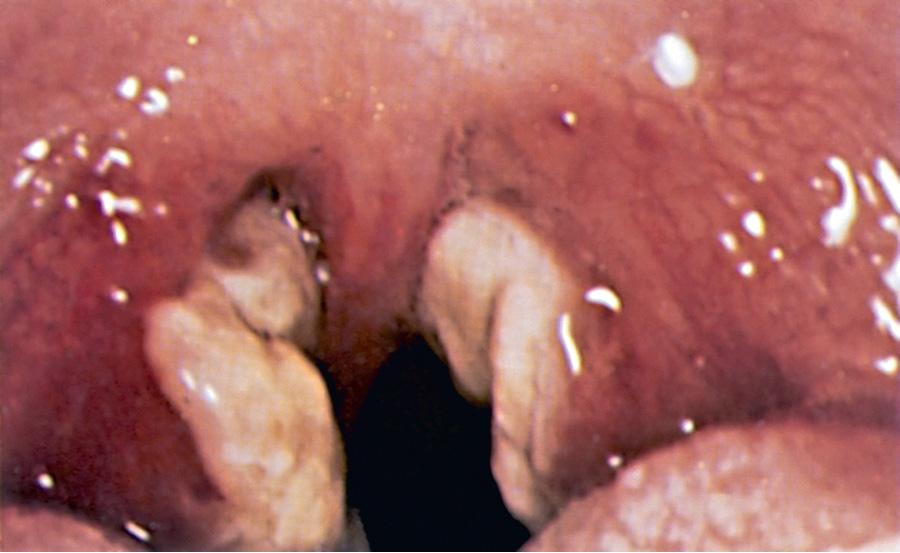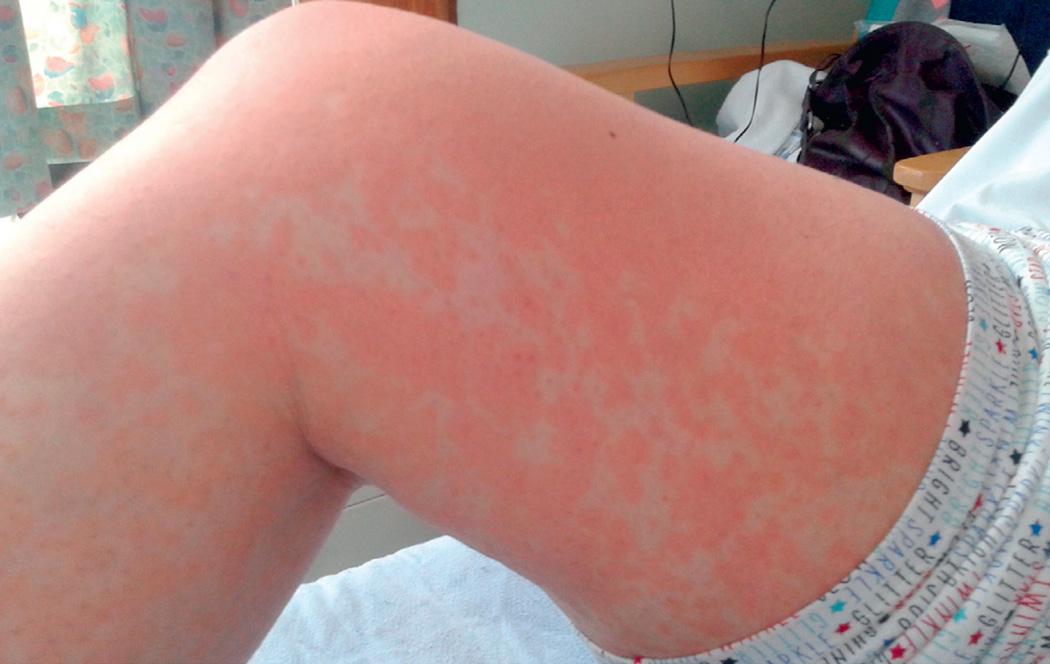Physical Address
304 North Cardinal St.
Dorchester Center, MA 02124
Infectious mononucleosis is the best-known clinical syndrome caused by Epstein-Barr virus (EBV). It is characterized by systemic somatic complaints consisting primarily of fatigue, malaise, fever, sore throat, and generalized lymphadenopathy. Originally described as glandular fever, it derives its name from the mononuclear lymphocytosis with atypical-appearing lymphocytes that accompany the illness.
EBV is a double-stranded DNA virus that is a member of the gammaherpesviruses and causes >90% of cases of infectious mononucleosis. Two distinct types of EBV, type 1 and type 2 (also called type A and type B), have been characterized and have 70–85% sequence homology. EBV-1 is more prevalent worldwide, although EBV-2 is more common in Africa than in the United States and Europe. Both types lead to persistent, lifelong, latent infection. Dual infections with both types have been documented among immunocompromised persons. EBV-1 induces in vitro growth transformation of B lymphocytes more efficiently than does EBV-2, but no type-specific disease manifestations or clinical differences have been identified.
As many as 5–10% of infectious mononucleosis–like illnesses are caused by other types of primary infections, particularly cytomegalovirus but also pathogens such as Toxoplasma gondii, adenovirus, hepatitis viruses and HIV. In the majority of EBV-negative cases of infectious mononucleosis, the exact cause remains unknown.
EBV infects more than 95% of the world's population. It is transmitted primarily via oral secretions. Among children, transmission may occur by exchange of saliva from child to child, such as occurs between children in out-of-home childcare. EBV is shed in oral secretions consistently for more than 6 mo after acute infection and then intermittently for life. As many as 20–30% of healthy EBV-infected persons shed virus at any particular time. EBV is also found in male and female genital secretions, and some studies suggest the possibility of spread through sexual contact. Nonintimate contact, environmental sources, and fomites do not contribute to transmission of EBV.
Infection with EBV in developing countries and among socioeconomically disadvantaged populations in developed countries usually occurs during infancy and early childhood. In central Africa, almost all children are infected by 3 yr of age. Among more affluent populations in industrialized countries, half of the population is infected by 6-8 yr of age with approximately 30% of infections occurring during adolescence and young adulthood. In the United States, seroprevalence increases with age, from approximately 54% for 6-8 yr olds to 83% for 18-19 yr olds. Seroprevalence at each age is substantially higher for Mexican-Americans and non-Hispanic blacks than non-Hispanic whites. Large differences are seen by family income, with highest seroprevalence in children of families with lowest income.
The epidemiology of the disease manifestations of infectious mononucleosis is related to the age of acquisition of EBV infection. Primary infection with EBV during childhood is usually asymptomatic or mild and indistinguishable from other childhood infections. Primary EBV infection in adolescents and adults manifests in 30–50% of cases as the classic triad of fatigue, pharyngitis, and generalized lymphadenopathy , which constitute the major clinical manifestations of infectious mononucleosis. This syndrome may be seen at all ages but is rarely apparent in children younger than 4 yr of age, when most EBV infections are asymptomatic, or in adults older than 40 yr of age, when most individuals have already been infected by EBV. The true incidence of the syndrome of infectious mononucleosis is unknown but is estimated to occur in 20-70 per 100,000 person-years. In young adults, the incidence increases to approximately 100 per 100,000 person-years. The prevalence of serologic evidence of past EBV infection increases with age; almost all adults in the United States are seropositive.
After transmission by saliva to the oral cavity, EBV infects both oral epithelial cells and tonsillar B lymphocytes, although it is unclear which cells are the primary initial targets. Ongoing viral replication leads to viremia and dissemination of infected B lymphocytes into peripheral blood and the lymphoreticular system, including the liver and spleen. Clinical manifestations of infectious mononucleosis, which are due to the host immune response to EBV infection, occur after a 6-wk incubation period following acute infection. The atypical lymphocytes that are frequently detected in patients with infectious mononucleosis are primarily CD8 T lymphocytes. Polyclonal CD8 T lymphocyte activation occurs early during the incubation period following infection, while expansion of EBV-specific CD8 T lymphocytes is detected closer to the time of symptom onset. Natural killer (NK) cells also expand in frequency and number following infection, particularly a CD56 dim CD16 − NK cell subset that is more effective than other NK cell subsets at recognizing infected cells. The host immune response is effective in rapidly reducing the EBV viral load, although persistent shedding of high levels of virus can be detected in the oropharynx for up to 6 mo. Intermittent shedding from the oropharynx occurs for many years following primary infection.
EBV, like the other herpesviruses, establishes lifelong latent infection after the primary infection. Latent virus persists primarily in memory B lymphocytes. The EBV genome persists as an episome in the nucleus of an infected cell and replicates with cell division. Viral integration into the cell genome is not typical. Only a few viral proteins, including the EBV-determined nuclear antigens (EBNAs), are produced during latency. These proteins are important in maintaining the viral episome during the latent state. Reactivation and new viral replication occurs at a low rate in populations of latently infected cells and is responsible for intermittent viral shedding in oropharyngeal secretions of infected individuals. Reactivation is unlikely to be accompanied by distinctive clinical symptoms.
The incubation period of infectious mononucleosis in adolescents is 30-50 days. In children, it may be shorter. The majority of cases of primary EBV infection in infants and young children are clinically silent. In older patients, the onset of illness is usually insidious and vague. Patients may complain of malaise, fatigue, acute or prolonged (>1 wk) fever, headache, sore throat, nausea, abdominal pain, and myalgia. This prodromal period may last 1-2 wk. The complaints of sore throat and fever gradually increase until patients seek medical care. Splenic enlargement may be rapid enough to cause left upper quadrant abdominal discomfort and tenderness, which may be the presenting complaint.
The classic physical examination findings are generalized lymphadenopathy (90% of cases), splenomegaly (50% of cases), and hepatomegaly (10% of cases). Lymphadenopathy occurs most commonly in the anterior and posterior cervical nodes and the submandibular lymph nodes and less commonly in the axillary and inguinal lymph nodes. Epitrochlear lymphadenopathy is particularly suggestive of infectious mononucleosis. Although liver enzymes are often elevated, symptomatic hepatitis or jaundice is uncommon. Splenomegaly to 2-3 cm below the costal margin is typical (15–65% of cases); massive enlargement is uncommon.
The sore throat is often accompanied by moderate to severe pharyngitis with marked tonsillar enlargement, occasionally with exudates ( Fig. 281.1 ). Palatal petechiae at the junction of the hard and soft palate are frequently seen. The pharyngitis is similar to that caused by streptococcal infection. Other clinical findings may include rashes and edema of the eyelids. Rashes are usually maculopapular and have been reported in 3–15% of patients. Patients with infectious mononucleosis who are treated with ampicillin or amoxicillin may experience an ampicillin rash, which may also occur with other β-lactam antibiotics ( Fig. 281.2 ). This morbilliform, vasculitic rash is probably immune mediated and resolves without specific treatment. EBV can also be associated with Gianotti-Crosti syndrome, a symmetric rash on the cheeks with multiple erythematous papules, which may coalesce into plaques and persist for 15-50 days. The rash has the appearance of atopic dermatitis and may appear on the extremities and buttocks.


A presumptive diagnosis of infectious mononucleosis may be made by the presence of classical clinical symptoms with atypical lymphocytosis in the peripheral blood. The diagnosis is usually confirmed by serologic testing, either for heterophile antibody or specific EBV antibodies.
Become a Clinical Tree membership for Full access and enjoy Unlimited articles
If you are a member. Log in here